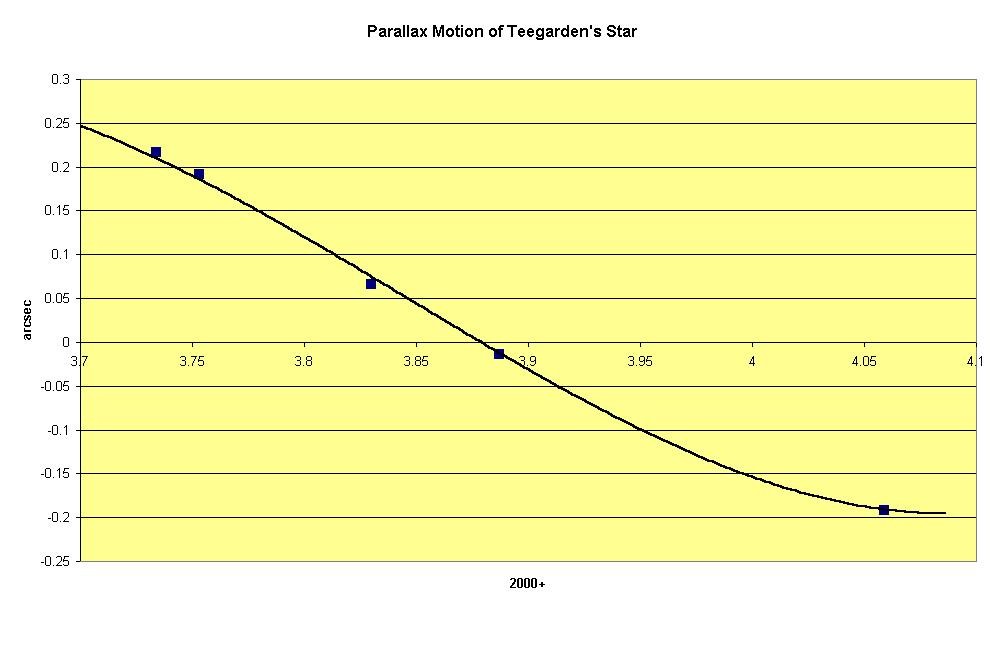
The Figure illustrates the parallactic motion of Teegarden's Star
(Teegarden et al. 2003, Discovery of a New Nearby Star, ApJ 589, L51).
The technique illustrated in the Figure is common for initial estimates
of a stellar parallax (eg.Gatewood et al. 1985, Short-Interval
Estimations of Trigonometric Parallaxes, PASP 97, 345). The proper
motion of the star is listed in the USNO B1.0 catalog (Monet, et al.
2003, http://www.nofs.navy.mil/data/fchpix/) as +3436 +/- 2 and -3810
+/- 3 mas per year in RA and Dec. respectively. As a check of the
motion and our reduction to the B1.0 catalog, we included the 1951
Palomar position in our analysis of the relative parallax, J2000
position, and proper motion. We find:
RA mu RA Dec mu Dec parallax
h m s s/yr o ' " "/yr "
2 53 00.867 +0.239273 16 52 52.90 -3.81014 +0.2574
+/- 0.0001 .000011 0.001 0.00015 0.0023
where all of the errors are strictly internal and do not reflect the
uncertainties in the reference system or the adjustment of the relative
parallax to absolute. An estimate of the reduction to absolute is
difficult at this stage, but we note that all of the reference star
proper motions are small and that their average apparent visual
magnitude is approximately 16. Adopting a parallax of 0.259 +/- 0.004
gives a distance of 3.86 +/- 0.06 parsecs and distance modulus of 2.067
+/- 0.034 magnitudes. Thus our initial analysis indicates that this
M6.5 star has an absolute visual magnitude of 17.47 +/- 0.04.
Our findings are in excellent agreement with those of the US Naval
Observatory (Conrad Dahn, private communications).
